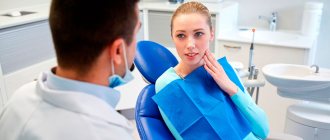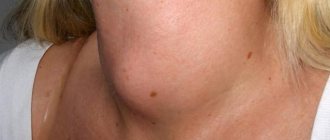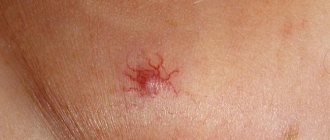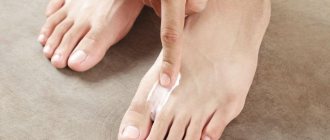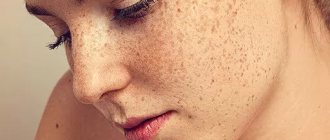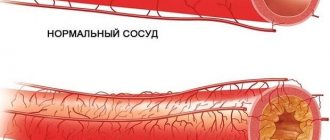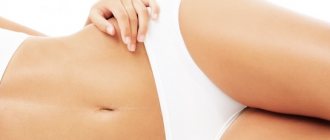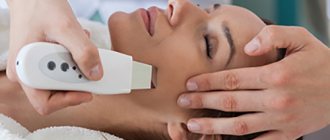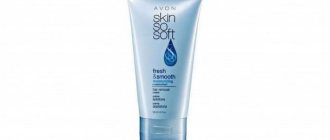Sometimes after sunbathing you may notice the appearance of white spots on the skin. Most people do not realize that this is a symptom of a skin disease.
At first, a person is bothered by itching and peeling of small areas of the skin, and after prolonged exposure to the sun, white spots appear on the arms, legs or chest. Most often, white spots on the skin are a sign that there is a fungal infection in the body. This is how pityriasis versicolor manifests itself.
When exposed to sunlight, healthy skin cells produce melanin, but the affected cells remain light-colored because they do not allow sunlight to pass through. Ringworm does not disappear on its own. At the first symptoms of tinea versicolor, you should consult a dermatologist.
What are the causes of pityriasis versicolor?
The causative agent of pityriasis versicolor is a conditionally pathogenic species of yeast that is constantly present on human skin and is part of its natural microflora.
The development of tinea versicolor occurs only under favorable conditions:
- genetic predisposition;
- increased sweating and changes in the chemical composition of sweat;
- frequent use of antibacterial gels;
- long-term treatment with steroid hormones;
- elevated blood sugar levels;
- weakened immunity;
- sun radiation (excessive tanning)
- diseases of the gastrointestinal tract, liver, pancreas;
- violations of skin barrier functions.
Most often, pityriasis versicolor occurs in young people, both men and women, but it also occurs in children with weak immunity, diabetes and vegetative neurosis. A separate risk group is children who experience excessive sweating during puberty. The likelihood of developing tinea versicolor is increased by solar radiation, heavy metals, and clothing made of synthetic materials.
Why do white spots appear?
Many representatives of the fair sex want to get a chocolate tan. For this, they are willing to spend hours under ultraviolet rays or go to a solarium, while few people think about the danger this poses.
Of course, girls with this approach will tan, but after tanning, white spots often appear on their backs, which significantly spoil their appearance. An open T-shirt, visiting the same beach and similar places are already becoming questionable.
White patches on the back are the dominant symptom of vitiligo. This pathological condition appears due to a deficiency of cells that produce melanin.
Interesting fact: the disease has been known since ancient times. In Rus', among the common people it was called “dog”. This may be due to the appearance of the sick person.
People are not born with this disease. An abnormal process in the body is formed under the influence of a combination of negative factors. Rarely, the disease occurs before the age of 10. At the moment, scientists have not come to a consensus whether ultraviolet rays are a provoking factor or not.
Factors leading to the development of vitiligo:
- Autoimmune disorders. In this case, there is a disruption in the activity of the immune system, as a result of which the immune system begins to fight the body;
- Genetic predisposition. This does not mean that the disease is directly inherited and will definitely manifest itself in the child if the mother or father has a history of such a problem. Scientists note that a certain chain of genes is transmitted, which can trigger abnormal processes in the body;
- Violation of the trophism of the skin, endocrine disorders;
- Impaired liver function;
- Taking certain medications.
In fact, almost any negative factor can lead to the development of a disease. It is impossible to predict this. The pathology is difficult to correct medically, since it has not been sufficiently studied.
However, there are effective conservative techniques that can reduce the severity of white spots on the back and prevent the appearance of new spots. Treatment is prescribed only by a doctor.
Is tinea versicolor contagious?
Not all infected people develop clinical signs of tinea versicolor, which is why it is classified as a conditionally infectious disease. Ringworm is transmitted through clothing, towels, and bedding. Pityriasis versicolor does not threaten human life, but at its first manifestations you should consult a dermatologist. If you do not pay attention to the symptoms and manifestations of the disease and do not start treatment, the spots on the skin will remain for a long time.
During treatment you should not visit beaches, swimming pools and baths. Rehabilitation involves general and individual measures for the treatment and prevention of pityriasis versicolor, intended for patients and people who may come into contact with them.
General measures to prevent ringworm:
- carrying out disinfection with chlorine-containing substances in public places (swimming pools, baths, saunas, sports facilities, industrial enterprises, etc.);
- sanitary educational work.
Individual treatment measures for ringworm:
- hygienic skin care;
- boiling linen and towels, ironing them;
- treatment of chronic diseases that can cause the appearance of tinea versicolor;
- individual drug treatment prescribed by a dermatologist.
Prevention of milia
To prevent the occurrence of whiteheads on the face, you need to learn how to monitor the health of your skin, clean it properly, avoiding contamination, and buy suitable cosmetics. For example, if you have oily skin, it is better to refrain from using greasy, poorly absorbed creams. In this case, it is worth using gels.
To prevent the appearance of milia, it is also necessary to exfoliate the skin of the face and eye area. Apply cleansing masks, such as paraffin masks, which are good for eyelid skin.
And you definitely need to adjust your diet, minimizing fatty, sweet, flour, and fried foods.
In the medical department, everyone can undergo examination using the most modern diagnostic equipment, and based on the results, receive advice from a highly qualified specialist. We are open seven days a week and work daily from 9 a.m. to 9 p.m. Our specialists will help identify the cause of vision loss and provide competent treatment for identified pathologies.
You can find out the cost of a particular procedure or make an appointment at the Moscow Eye Clinic by calling 8 and 8 (499) 322-36-36 (daily from 9:00 to 21:00) or using the online registration form .
Why shouldn’t pityriasis versicolor be treated with traditional methods?
Self-medication is dangerous to health; you should not prescribe medications to yourself or use traditional methods of treatment - this can worsen the condition of the skin and aggravate the development of the disease. Only a dermatologist can determine the exact type of infection and its nature and help choose treatment to eliminate the symptoms.
If you feel discomfort on the skin in the arms, legs or chest, you should consult a dermatologist. If you strictly follow the instructions, you will be convinced that the fungus on the skin can be treated.
Fungal infection on the back
Fungus on the back is a skin pathology characterized by high prevalence in the modern world. Significantly worsens the patient’s quality of life and requires long-term treatment.
White spots on the back indicate pityriasis versicolor. The causative agent is yeast-like fungi. Spots can occur when the immune system fails, as a result of which the usual inhabitants of the skin begin to become active and multiply.
Composition and instructions for use of Sebozol shampoo
Characteristic signs of fungal infection:
- Pigment spots on the back of different colors and sizes. They can also be localized on the shoulders, chest, and scalp.
- The spots are most often round.
- Itching is rare.
- Peeling of the affected areas.
- The spots remain on the body for a long time, and then disappear spontaneously.
In some cases, spots begin to actively grow, which indicates the progression of the disease. In the absence of therapeutic treatment, a large area of the skin is affected.
It is worth knowing: a fungal infection negatively affects melanocytes, as a result of which the production of melanin, which gives the skin its natural shade, stops in some areas of the epithelial tissue.
The dominant symptom of pityriasis versicolor is spots. At first they are slightly pink (as in the photo), then gradually change their color and become brown. After a certain period of time they turn into bleached pigments.
They are most noticeable after going to the beach or solarium. Over time, the lesion begins to grow, its features become more pronounced and bright. In some cases, the spots merge, resulting in a larger affected area.
Treatment for fungal infection on the back
The doctor will tell you how to treat the disease. Therapy should be comprehensive, combining various therapeutic measures aimed at destroying the pathogen. For correct prescriptions, it is recommended to undergo a thorough examination, find out the type of fungus, its quantity, and other nuances that allow you to prescribe the most adequate treatment.
Fungal therapy includes the following drugs:
- Localized antifungal drugs;
- Antihistamines, vitamins, immunostimulants (drugs that help restore normal functionality of the immune system);
- Physiotherapeutic procedures;
- Glucocorticosteroids.
If the patient is diagnosed with a severe form of the disease, then Fluconazole and Itraconazole are prescribed. The action of drugs with keratolytic properties is focused on the rejection of the upper layer of the epidermis, as a result of which topical drugs penetrate to a deeper level and act more efficiently and effectively.
Treatment always takes a long time; it is necessary to undergo laboratory control. Only by destroying pathogenic microorganisms can you permanently get rid of cosmetic defects in the form of spots on your back.
Ointments, shampoos, soaps, creams
This is not the most effective way to deal with white spots, because the problem is hidden much deeper than on the surface of the skin. But they can also help.
It is best to use ointments when dealing with spots caused by lichen or mycosis. If you are prescribed Nizoral, Orungal or Lamisil tablets, it is recommended to enhance their effect with similar ointments. The same goes for antibiotics.
Here are a few names of ointments that dermatologists prescribe for leukoderma of various origins:
- Methylpred (price from 350 rubles), alklometasone (price from 320 rubles). These are glucocorticoids in ointments. Can be used for vitiligo.
- Melagenin. A popular drug for the treatment of vitiligo. Available as a lotion. The basis of the product is human placenta extract. When using the product, the repigmentation process is accelerated, the skin absorbs ultraviolet rays and the formation of melanin is stimulated. A positive effect is also observed in cases with loss of pigmentation after psoriasis or burns and wounds. It is also effective for eczema and psoriasis. Price from 4400 rub.
- Betamethasone. A glucocorticoid agent that will be effective for both vitiligo and fungi. Price from 176 rub.
- Clotriamzole. Ointment with a wide spectrum of action. It will help get rid of causes of white spots such as lichen and fungal diseases; it is also effective for eczema and psoriasis. Price – 97 rub.
- Irunin. An antifungal agent with the active substance itracanazole. Inhibits the membranes of many fungi. Price from 352 rub.
Afloderm
Betamethasone
Irunin
Clotrimazole
Melagenin
Metipred
Proper nutrition
White spots often appear due to problems with metabolism and the gastrointestinal tract. This can be corrected by changing your diet.
You can also stimulate the production of melatonin with proper nutrition. When treating white spots of any etiology, do not forget about the role of nutrition in their therapy.
With vitiligo, the body needs tyrosine.
You can find it in the following products:
- Traditional medicine for white spots recommends adding onion juice and garlic to all your dishes
sea fish;
- milk and everything that is made from it;
- seafood;
- meat and liver;
- all legumes;
- vegetable oils;
- eggs;
- buckwheat, millet and oats;
- carrots, tomatoes, cauliflower, radishes, pumpkin, spinach, beets, avocado, parsley;
- banana;
- grapes, blueberries, raisins;
- pumpkin, sesame, flax, sunflower seeds;
- pistachios, hazelnuts and almonds.
Traditional medicine for white spots recommends adding onion juice and garlic to all your dishes as a means to fight fungi and helminthic infestations and to strengthen the immune system.
Be sure to take vitamin and mineral complexes as an addition to a proper diet.
Do not abuse coffee, sweets and alcohol.
Eliminate from your diet everything that could even theoretically cause an allergy. Observe how your skin behaves without provocateurs.
Skin graft
This method is recommended for vitiligo, when areas of hypomelanosis become too large and cannot be corrected.
Skin grafting can be:
- To carry out the transplant, the skin is cut off using a dermatome, the flap is immediately transplanted to the desired area and sutured
autotissue, when the patient’s healthy skin is used (for vitiligo - not the best option);
- allotissue – the skin of immediate relatives is used;
- cellular is a good option for vitiligo. It uses individual cells created in the laboratory.
To carry out the transplant, the skin is cut off using a dermatome, the flap is immediately transplanted to the desired area and sutured.
Another operation, melanocyte transplantation, is also gaining popularity.
It is carried out if the disease is stabilized and the spots have not grown for the last six months.
For transplantation, healthy melanocytes are taken from the skin on the buttocks (or other areas of the skin not affected by vitiligo), converted into a cell suspension and injected into the depigmented area, previously treated with dermabrasion or laser.
A special bandage is placed on top. Repigmentation occurs after 2–4 months.
There are several requirements for melanocyte or skin transplantation:
- you should not be anemic;
- the level of total protein should be below 60 g/l;
- protein coefficient level is greater than 1.
